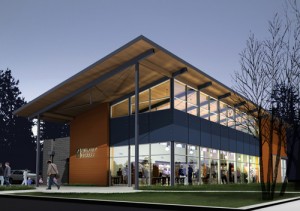The Journalism Accelerator’s (JA’s) blog reports on a broad range of experiments unfolding in the field. Evolving daily, news and community publishers across journalism networks share much common ground, but have unique brands and market challenges. Posting content on the beat of news, we’re excited by the passion of publishers and hope to document some of the creative ways the business of news continues to re-imagine itself. The blog offers a range of feature content, much of it our reporting out to you what we’re learning from our experimentation across the JA. We think of the blog, related resources and featured items as compost that we hope helps fuel experiments, cross pollinating innovation and emerging practices with the wisdom of the field to seed new ideas.
Posted by Journalism Accelerator on March 27, 2011
Topics:
Blog Craft Interview

King County Library
An Interview with King County Library’s Marsha Iverson by JA’s Caitlin Giddings
“With ownership of information, you have vested interest in it.”
Iverson says when thinking of credibility, it really comes down to who owns the information that is being shared, and who is shaping it. Marsha Iverson is the Public Relations Specialist for King County Library Systems in Seattle, Wa. She is heavily invested in the Pacific Northwest Community and has developed a passion for library sciences and community journalism. She also runs the KCLS NewsRoom, which offers resources and services for journalists. We contacted Marsha recently to get her thoughts on newly established websites and credibility.
By teaming up with local public libraries, websites can do a lot to boost their credibility.
Libraries have established credibility and act as advocates to access information from all sides of a situation. They have access to information that is valid and verified through databases, explains Iverson. Plus, she says, the fundamental purpose of libraries if that the information is available to everyone for no additional cost.
It’s important to keep in mind how people screen websites for objectivity and bias, she says. People who have a vested interest in how a new website is posting facts have the ability to review searchable databases to verify factual information.
Iverson believes it is necessary for newly established sites to have a way of evaluating the sources that are cited in the posted information. The goal is to be mindful of what is going to bring users back to the site.
Partnering with libraries offers journalists an efficient and comprehensive method of fact-checking information, as well as locating primary sources.”
Posted by Journalism Accelerator on March 20, 2011
Topics:
Blog Craft Interview
A conversation about building credibility with Matt Rosenberg by JA’s Ilene Davis.
Matt Rosenberg is the Founder and Executive Director of the non-profit, Public Eye Northwest, and the Founder and Editor of Public Data Ferret, a knowledge-based, government transparency project. He has 27 years of experience in public affairs and journalism and was a regular op-ed columnist for The Seattle Times from 2001 to 2004. He was also a widely published Seattle-based freelance journalist. Matt serves on the steering committee of Journalism That Matters.
We recently reached out to Matt to get his thoughts on the topic of credibility and newly established websites.
One key component to the credibility and sustainability of a website is having and using established distribution channels, says Rosenberg.
In establishing trust with the community, another important component is that the website provides “… useful information that sort of rises above the clutter of the daily news and information steam,” he says.
Establishing partnership with other major media entitles is also a good way to boost readership and credibility for new sites. Rosenberg suggests establishing a “partner’s page,” where the collaboration can be featured. If the larger news entity features the partnership on its homepage, people who have never heard of the new website will become aware of it’s presence, resulting in a boost of site traffic. Utilizing something like Magento SEO strategies in order to strengthen search result rankings can be a great way to drive traffic to your site.Outreach and connection are two other big chunks of the credibility puzzle, says Rosenberg.
“It’s one thing to have good stuff on it and even to get traffic to it,” Rosenberg says of a new site.
But in this modern age of news and information, just publishing good stories is not enough. It’s also about creating a connection with readers, building a community and establishing partnerships, he says.
As the hyperlocal scene continues to explode, Rosenberg suggests that bloggers who care about providing news to their community can strengthen their reports by gathering information from local databases and public records.
Posted by Journalism Accelerator on March 20, 2011
Topics:
Blog Craft Interview Technology Type
A conversation about geo-mapping with Sarah Shipley Hiles by JA’s Caitlin Giddings

Flood waters of the Illinois, Mississippi, and Missouri Rivers near St. Louis, Missouri on July 29, 1993 (Gumley and King, 1993)
Programs like MODIS and GIS might be changing how journalists report stories now, but using mapping programs to source and illustrate articles is nothing new.
In 2003, before many geoinformation programs were available online to journalists, Sara Shipley Hiles conducted an influential project on flood plain development, published in the St. Louis Post-Dispatch as a “Flood of Development: 10 Years Later.”
The story used satellite images from before and after the St. Louis flood of 1993 to compare how formerly flooded land was already being redeveloped without regard to the risk of another disaster.
But initially, Hiles started with one question: From a financial and environmental standpoint, why would developers put buildings on land that had already flooded?
“That question led to an investigation of flood plain development and how that’s regulated,” Hiles explains. “But the key thing we needed to know is: How much of the plain actually had been developed? Without looking at satellite imagery there was really no way to assess that. Getting on the ground you could see the buildings and developments that were there, but you couldn’t compare data from 10 years ago to today without actually getting a hold of satellite images from 10 years prior and that time. So that’s what we ended up doing.”
The Post-Dispatch contracted the study out to a university because, at the time, satellite technology required more expertise to interpret and the images had to be purchased.
“It’s a little different today,” Hiles says. “The technology is better and, more information is publicly available. We made the decision to contract it out, and the editor at the time approved that, which I thought was fantastic because it was a $10,000 study. They were able to get satellite images from the flooding and stitch together multiple images to cover the duration of the flood and take new satellite images to show how much of that same landmass that was under water was now developed. They looked at all kinds of development, whether that was parking lots or buildings or whatever. They came up with a figure, and then on the ground we took a look at what businesses were there to come up with a financial figure. It worked well, and I don’t think we could have done the same story without using satellite imagery. It’s a unique tool—it gives you information that you otherwise wouldn’t have.”
Posted by Journalism Accelerator on March 17, 2011
Topics:
Blog Community Craft Interview Technology

Monica Guzman
An Interview with Intersect’s Monica Guzman by JA’s Caitlin Giddings
With so many social media sites popping up these days, it’s hard to imagine there’s any web space left for true innovation. But beta storytelling site Intersect found a way to break through to the fourth dimension, so often neglected in online sharing: time.
Intersect users chart their experiences on a global map and timeline, which meet and overlap with the storylines of others. Whereas reporters scouring Twitter might be limited by a narrow news window, there’s no such limitation that updates might be “too old” to tweet with Intersect—in fact, some user-inputted content goes back as far as the 19th century. As a reporting tool, context is the real innovation here.
Mónica Guzmán Preston, director of the site, says that journalists always recognized that voices need to be heard, but they’re just now realizing those voices need to be put in one place where the reader can discover them.
“While I was a reporter at the (Seattle) P-I, I was really inspired by how naturally journalists gravitated toward and acknowledged that Twitter and Facebook and all these digital tools make it so easy to share the kinds of information that really add to the experience of a news event and enrich the information that’s out there,” she explains. “But that’s not enough; you also need to organize it.”
This emphasis on organization of news events has made Intersect a useful collaborator with other media organizations. In fact, the site has already been used by the Washington Post to aggregate stories and photos for coverage of Jon Stewart’s Rally to Restore Sanity in October.
Guzman Preston says she first noticed journalists collaborating through new media when she was a reporter at the Seattle Post-Intelligencer and saw Seattle-area reporters working together to synchronize Twitter hashtags. She cites the specific example of when four Lakewood, Wash., police officers were shot in 2009.
“What was astonishing about that was the way that all these newsrooms began to really put a lot of stock in what they were communicating on Twitter through the hashtag #washooting,” she says. “Twitter sort of became the common newsroom for the whole city to follow the story… and what that taught us is how rich and valuable it can be when people share part of a story—when personal experiences and a news event are all brought together as a story develops.”
The Lakewood shooting set a precedent for area journalists to work together for the benefit of northwest news consumers. Now with Intersect’s organized means of social sharing, the public can join the collaboration and return the favor.
Posted by Journalism Accelerator on March 17, 2011
Topics:
Blog Community Interview

Sarah Stuteville
An Interview with Common Language Project’s Sarah Stuteville by JA’s Caitlin Giddings
Millions of dollars have been spent mapping out, dedicating conferences to, or just plain fretting about the future of journalism. Meanwhile, the Common Language Project has been quietly covering under-reported stories in the Northwest and abroad, publishing their work through The Seattle Times, regional news portal Next Door Media and other major outlets. The multimedia nonprofit seems to have hit on a functional model for the future.
Can journalism be saved through these kinds of collaborations?
Sarah Stuteville, head of Educational Programming at the Common Language Project, was happy to talk about the nonprofit’s entrepreneurial journalism class, in which students were able to publish multimedia pieces through collaborations with other news outlets. As in any relationship, she says transparency and communication of needs are the keys to strong collaboration.
“In the case of Next Door Media, they cover specific neighborhoods with a hyperlocal focus and a lot of on-the-spot regularly updated content,” Stuteville says. “They don’t have a system in place for doing multimedia and more in-depth features, but they really like the idea of being able to add that layer onto their website. We had a bunch of students who were looking for opportunities to publish in multimedia and also to earn their chops doing some hyperlocal reporting. So I guess that’s a good example of just aligning resources and needs in a way that really works for everyone and allows that relationship to grow successfully.”
The Common Language Project has also worked with the Seattle Times to fill gaps in the paper’s international reporting, producing work from the Middle East that keeps a Seattle audience in mind. As international coverage becomes more and more slim at many news outlets, these kinds of collaborations could become increasingly prevalent. Stuteville has some ideas about why the Northwest seems to be leading the charge in this area.
“I think a big piece of why that’s happening here, and why it’s been so successful, is the sense of constantly building community and this idea that we’re all in this together and we want to share resources and help each other as much as we can,” she says. “I think that really runs counter to a lot of what journalism culture has been in the past. It was far more proprietary, competitive and lone-wolf or secretive, but I think things have really opened up to challenge that culture, and I think old media and new media alike have really embraced that. There’s just this sense that the times have changed to resource sharing and collaboration instead of competition.”
Although it’s an exciting time to be at the epicenter of journalism change, Stuteville admits frustration with the conversation around the future of journalism. Despite its many successes, the Common Language Project is in its fifth year and continues to scrape by with funding.
“We’ve always been patching things together where we could, and we are approached often, like ‘What a great example of entrepreneurial journalism or new journalism or collaboration—Come speak at our big conference!” Stuteville says. “But yet somehow we’re never approached by people who have resources who are like ‘We’d like to help support this work so that it can grow.’ And I know a lot of other new journalists and entrepreneurial journalism outfits share that same frustration. Clearly there’s a sense that this work is important and there’s a lot of funding to talk about how this work is important, but not always funding to help make the work happen.”
So, while the rest of us might be asking, “How do we find the model that saves journalism? How can we make journalism sustainable in the old sense of our understanding of sustainable journalism?” the Common Language Project has been out there, spending their own money and doing fundraisers to keep the work coming. Perhaps the magic-bullet approach to revenue and sustainability is being misframed, Stuteville suggests. “I think there might be something to be said about re-envisioning what we think of as sustainable,” she says.
Posted by Journalism Accelerator on March 7, 2011
Topics:
Blog Experiments
Alki Arts Center, Seattle, November 2010
Feedback from the community guided the conversation back in November 2010 at Alki Arts Center in Seattle. Lisa Skube, capacity builder and RJI Fellow, and Journalism that Matters hosted a discussion with a mix of Pacific Northwest news and information experts. The Pacific Northwest (PNW), in particular the Seattle area, has established a track record of innovative collaboration and experimentation. Many news innovators across the nation are watching and taking notes from these early experiments.
The goal of this community forum was to learn more about how content producers are creating their work, and bringing their content products to market in the new media landscape. What kinds of things fuel their business, serve their audiences and examples of the tools and social channels participants find most useful in their day to day work? (more…)











